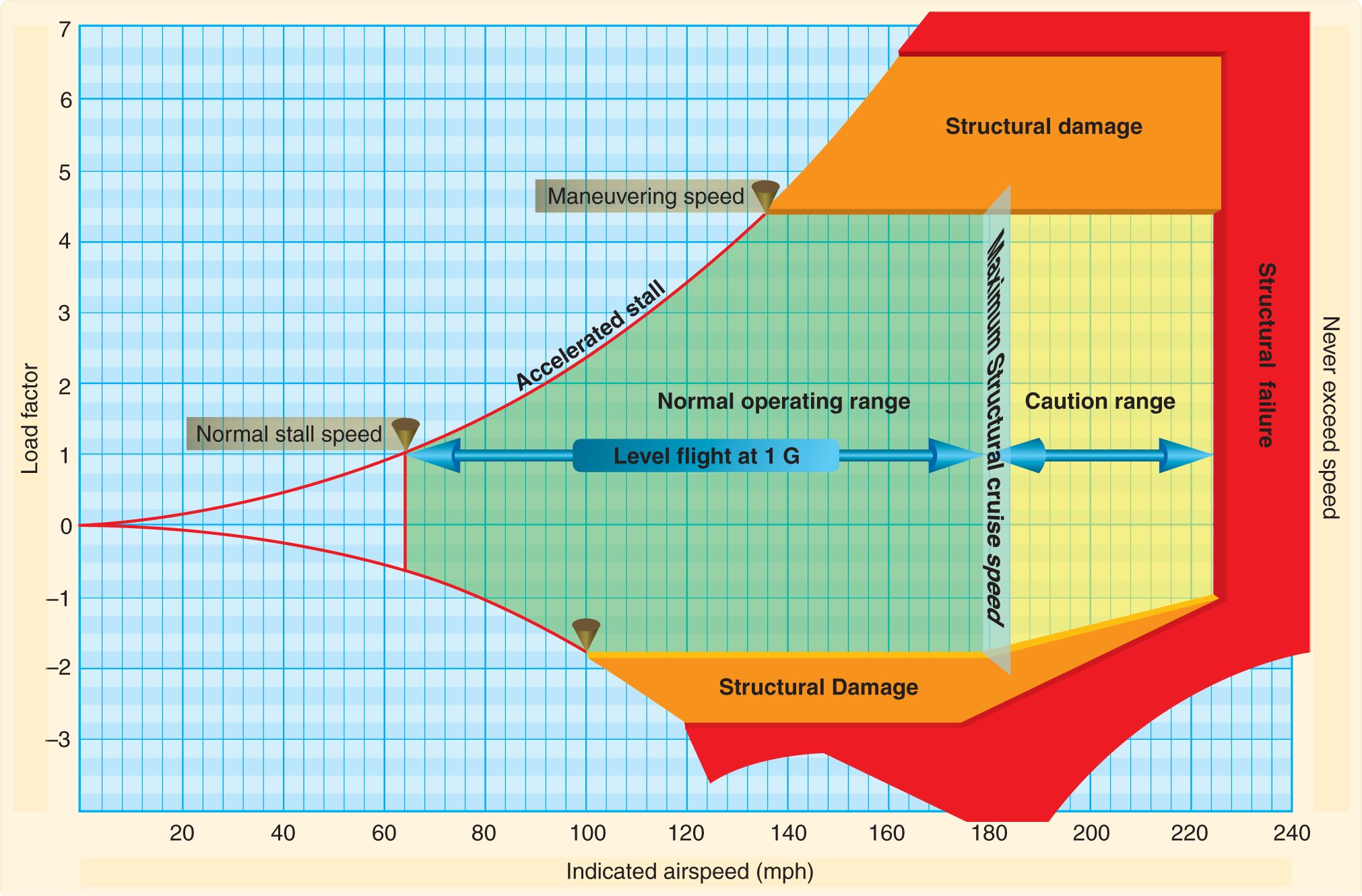For more information on the aerodynamics of flight, check out the Pilot’s Handbook of Aviation Knowledge.
The flight operating strength of an aircraft is presented on a graph whose vertical scale is based on load factor. The diagram is called a Vg diagram—velocity versus G loads or load factor. Each aircraft has it’s own Vg diagram which is valid at a certain weight and altitude.
The curved lines representing maximum lift capability are the first items of importance on the chart. The aircraft in the figure above is capable of developing no more than +1 G at 62mph, the wing level stall speed of the aircraft. since the maximum load factor varies with the square of the airspeed, the maximum positive lift capability of this aircraft is 2 G at 92 mph, 3 G at 112 mph, 4.4 G at 137 mph, and so forth. Any load factor above this line is unavailable aerodynamically (i.e., the aircraft will stall above that line). The same situation exists for negative lift flight with the exception that the speed necessary to produce a given negative load factor is higher than that to produce the same positive load factor.
If this aircraft is flow at a positive load factor greater than the positive limit load factor of 4.4, structural damage is possible.
There are two other points of importance on the VG diagram. One point is the intersection of the positive limit load factor and the line of maximum positive lift capability. The airspeed at this point is the minimum airspeed at which the limit load can be developed aerodynamically. Any airspeed greater than this provides a positive lift capability sufficient to damage the aircraft. The usual term given to this speed is maneuvering speed.
The other point of importance is the intersection of the negative limit load factor and line of maximum negative lift capability. Any airspeed greater than this provides a negative lift capability sufficient to damage the aircraft; any airspeed less than this does not provide negative lift capability sufficient to damage the aircraft from excessive flight loads.
The limit airspeed (or redline) is a design reference point to the aircraft—the aircraft above is limited to 225 mph. If flight is attempted beyond the limit airspeed, structural damage may result.
The aircraft must be operated within this “envelope” to prevent structural damage. The pilot must appreciate the Vg diagram as describing the allowable combination of airspeeds and load factors for safe operation. Any maneuver, gust, or gust plus maneuver outside of the structural envelope can cause damage and shorten the service life of the aircraft.





